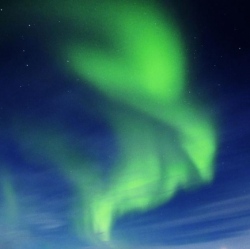
The most exciting astronomical discovery of 2014 has vanished. Two groups of scientists announced today that a signal which some scientists claimed was "smoking gun" evidence of dramatic cosmic expansion just after the birth of the universe, was actually caused by something much more mundane: interstellar dust.
In the cosmic inflation announcement, which was unveiled in March 2014, scientists with the BICEP2 experiment, claimed to have found patterns in light left over from the Big Bang that indicated that space had rapidly inflated at the beginning of the universe, about 13.8 billion years ago. The discovery also supposedly confirmed the existence of gravitational waves, theoretical ripples in space-time.
But in a statement today, scientists with the European Space Agency said that data from the agency’s Planck space observatory has revealed that interstellar dust caused more than half of the signal detected by the Antarctica-based BICEP2 experiment. The Planck spacecraft observations were not yet available last March when the BICEP2 science team made its announcement.
"Unfortunately, we have not been able to confirm that the signal is an imprint of cosmic inflation," Jean-Loup Puget, principal investigator of the HFI instrument on Planck at the Institut d’Astrophysique Spatiale in Orsay, France, said in the statement. The conclusion is the result of a collaborative analysis by scientists with both BICEP2 and Planck, using data from both telescopes as well as the Keck array at the South Pole.
